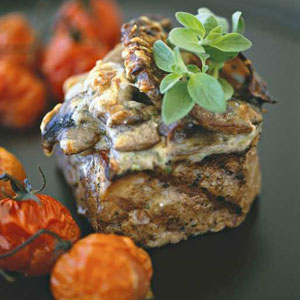Steakhouses are popular because people are shy to make their own steaks at home. It’s the simplest food, yet it can so easily go horribly wrong, leaving you with a tough, overcooked piece of meat that only the hungriest dog would appreciate.
Brush up on your braai skills with these tips and then scroll down for 5 great steak recipes.
Steak out:
The best steak starts with buying the best meat you can get, from a
trusted butcher. Look for meat that is labelled ‘mature’, and is dark,
almost purple in colour. This means that the carcass has been properly
hung and the steak will have good flavour.
Steak meat should never be soft and bright pink. Beef requires a fair
marbling of fat in the meat for it to be succulent when grilled or
pan-fried, sorry slimmers!
It’s also important that your meat is nice and thick, so it stays rosy
inside while cooking, and remember to bring it to room temperature
before cooking.
Marinating red meat in red wine before cooking add flavour and help to
tenderise, but only the surface. Too strong a marinade can destroy the
flavour of the meat. Tenderising meat by hammering it or adding a
commercial powder tends to break down the fibres, so juices will be
lost. Rather rub the surface of the meat with mustard, pepper or
paprika an hour before cooking and oiling.
Into the frying pan:
You’ll need a very hot pan or grill so your steak browns
quickly. Oil the meat or brush it with melted butter and sprinkle with freshly
ground black pepper, or rub the meat with one of the gourmet rubs
available from the supermarkets. Because salt draws the juices from the
meat, rather add salt after cooking to ensure a more tender cut. Having
said that, there is a school of thought that insists in coating the
steak with a good layer of course salt before frying to create a superb
crust. If you try this, be sure you heat is right up there so the meat
cooks really fast, creating the crust without drying the meat out.
The trick is not to turn the meat too often as this will only toughen
it. Turning it only three times, cooking it for around three minutes
per side in total or less if you like it rare, should do fine. As a
rough guide, 2cm-thick sirloin or rump steaks should be cooked for five
minutes for rare meat, eight minutes for medium-rare meat and 12
minutes for well-done meat.
Well-cooked meat shrinks more than meat that is cooked medium-rare. For
lean meat that is off the bone, allow 100 to 175g per person. For meat
on the bone, allow 230 to 375g per person. Meat in casseroles will be
well cooked, so to allow for shrinkage, buy 115 to 225g per person.
Rest freshly cooked meat on a plate, in a warm place, for at least five
minutes before serving. Once the steak is out of the pan, you’ll find
lots of flavour left behind. Pour off any fat, add a splash of stock,
water or wine to the pan and dissolve the sticky bits to release their
flavour. This makes a delicious sauce to pour over the meat. The heat
can be lowered and crushed green peppercorns added, together with half
a teaspoon of mustard, 30 ml cream or crême fraîche and seasoning.
A simple way to judge the cooking of a steak is to compare its
resilience to that of your thumb muscle when you press your thumb
against your other four fingertips. The further your thumb has to reach
across your hand to meet a fingertip, the more resilient the muscle.
Thumb to forefinger: the thumb muscle gives no resistance, similar to the feel of a blue or very rare steak.
Thumb to middle finger: the muscle feels spongy, like rare steak. Deep-pink beads of juice will appear on the surface.
Thumb to ring finger: the muscle feels resistant, like a medium steak. The surface will be crusty, brown with pink beads of juice.
Thumb to little finger: the muscle feels firm, well-done steak. The surface will be crusty, brown and dry, with clear beads of juice on the steak.
Chuck is the forequarter cut,
especially good for braising and stewing. Long, slow cooking breaks
down the connective tissues and leaves a delicious portion of beef.
Eye fillet or fillet is the prime beef cut and has
negligible fat, almost no waste and incredible tenderness. It can lack
flavour and benefits from the meat being marbled with fat. A fillet can
be roasted whole or cut into steaks. It continues to cook when removed
from the pan or oven. A medallion is a very neat, small, thick piece of
fillet.
Minute steaks are thin and cook very quickly.
Porterhouse steak is one of the more tender and neat cuts available. It has good flavour and a thin layer of fat across the top of the steak.
Rump has a lack of tenderness but makes up for this with its gutsy, juice flavour.
Scotch-fillet comes from the rib area, which has little visible fat. It has a mild flavour and is usually quite tender.
T-Bones are for healthy appetites, because they often
weigh 350 to 500g per steak. This cut is easily recognisable because of
the T-bone in the centre of the steak, which has sirloin on one side
and fillet on the other.
5 great steaks to try:
Steak and sweet potato salad with asparagus
Rump steak with feta and tomato
Steaks with port and pepper sauce

